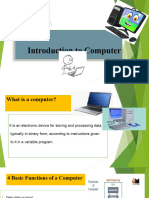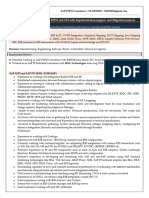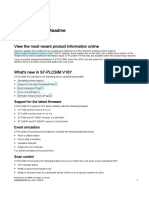0% found this document useful (0 votes)
7 views4 pagesConputer System
The document provides a comprehensive overview of computer systems, including components like the CPU, memory, input/output devices, and the evolution of computers. It also covers software types, including system software, application software, and programming tools, along with the role of operating systems in managing resources and user interfaces. Additionally, it discusses data management and the distinctions between data and information.
Uploaded by
tahsinansari560Copyright
© © All Rights Reserved
We take content rights seriously. If you suspect this is your content, claim it here.
Available Formats
Download as PDF, TXT or read online on Scribd
0% found this document useful (0 votes)
7 views4 pagesConputer System
The document provides a comprehensive overview of computer systems, including components like the CPU, memory, input/output devices, and the evolution of computers. It also covers software types, including system software, application software, and programming tools, along with the role of operating systems in managing resources and user interfaces. Additionally, it discusses data management and the distinctions between data and information.
Uploaded by
tahsinansari560Copyright
© © All Rights Reserved
We take content rights seriously. If you suspect this is your content, claim it here.
Available Formats
Download as PDF, TXT or read online on Scribd
/ 4
























































































